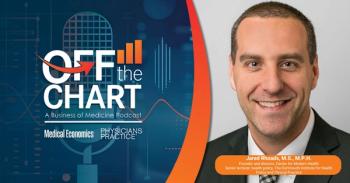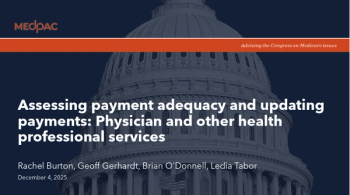
Leading with clarity: How conscious leadership can transform your medical practice
Key Takeaways
- Conscious leadership combines emotional intelligence, neuroscience, and mindfulness to help physician leaders manage stress and improve decision-making in high-pressure environments.
- Key capabilities include self-awareness and self-regulation, allowing leaders to step back from reactive responses and make thoughtful decisions that benefit patients and staff.
Practical strategies for physician leaders to develop self-awareness, manage stress, and improve both patient care and team performance
The emergency department was in chaos. Dr. Sarah Chen, the department director, felt her frustration mounting as she watched the evening shift struggle with a surge of patients, equipment failures, and staffing shortages. Her first instinct was to jump in and start barking orders—the same approach that had served her well as a resident, like a commander charging into battle. But something made her pause. In that moment of reflection, she realized her stress and impatience would only add to the tension, potentially compromising both patient care and team morale—like throwing gasoline on an already blazing fire.
This scenario illustrates a critical challenge facing physician leaders: the ability to remain calm, objective, and clear-headed under pressure, even when everything around you feels like a symphony played by musicians who've lost their sheet music. While medical training excels at developing clinical expertise, it often falls short in preparing physicians for the leadership demands of running practices, departments, or health care organizations.
Enter conscious leadership—a scientifically-backed approach that can help physician leaders see more clearly, make better decisions, and create more effective teams, even in high-stress health care environments. Think of it as developing internal radar that helps you navigate through any storm with grace and wisdom.
What Is conscious leadership? The art of leading with your eyes wide open
Conscious leadership centers on being "calm, stable, and objective" so you can "see things clearly, including yourself." For physician leaders, this means developing the ability to step back from reactive responses and make thoughtful decisions that benefit patients,
The concept builds on decades of research in emotional intelligence, neuroscience, and mindfulness, creating a convergence of ancient wisdom and modern science. At its core, conscious leadership requires two key capabilities: self-awareness (understanding your emotional states and their impact, like having a sophisticated internal monitoring system) and self-regulation (managing your responses effectively, like being a master sailor who can adjust the sails regardless of wind conditions).
Consider the difference between two practice leaders facing the same crisis—a major insurance claim denial affecting multiple patients. The unconscious leader might immediately call an emergency meeting, express frustration about insurance companies, and demand staff work overtime to resolve the issue (reactive leadership in full display). The conscious leader would first recognize their own stress response, take time to consider options objectively, then engage the team in collaborative problem-solving while maintaining focus on patient welfare—like the difference between a pot boiling over and a gentle simmer that creates something nourishing.
The challenge of leadership shadows: When our strengths become our kryptonite
Every physician leader has what researchers call "leadership shadows"—ingrained reactive patterns that emerge under stress, like old grooves in a well-worn path that our minds automatically follow. These shadows often develop during medical training, where quick decisions, perfectionism, and individual heroics are rewarded. While these traits serve physicians well in clinical emergencies, they can become unexpected liabilities in leadership contexts—like wearing surgical gloves to play the piano.
Common leadership shadows among physician leaders include:
Hypercontrol: The tendency to micromanage every aspect of practice operations, stemming from the clinical need to monitor patient safety closely. While vigilance is crucial in patient care, excessive control can stifle staff autonomy and innovation—like trying to conduct an orchestra by playing every instrument yourself.
Perfectionism: The medical imperative to avoid errors can translate into unrealistic expectations for staff and systems, leading to burnout and decreased morale. It's the difference between striving for excellence (inspiring) and demanding perfection (exhausting).
Impatience: The fast-paced nature of medical practice can create habits of rushing decisions and cutting short important conversations with staff or colleagues—like being so focused on reaching the destination that you miss the scenic route that might actually be more efficient.
Emotional compartmentalization: While maintaining professional composure with patients is essential, completely suppressing emotions in
Dr. Michael Rodriguez, a family practice owner, recognized his shadow when he noticed staff members had stopped bringing problems to him—a telling sign that something had shifted in the organizational ecosystem. His pattern of immediately jumping to solutions—honed through years of rapid clinical decision-making—was inadvertently shutting down important discussions about workflow improvements and patient satisfaction issues. It was like being such an efficient problem-solver that he'd accidentally trained his team to stop thinking creatively.
The S-ART framework for conscious leadership: Your inner GPS system
Hull and Moore present a practical framework called S-ART (Self-Awareness, Self-Regulation, and Self-Transcendence) that physician leaders can use to develop greater consciousness in their leadership approach—think of it as upgrading your internal operating system.
Step 1: Self-Awareness (The Mindful Observer)
The first step involves recognizing when you're operating from a reactive state rather than a conscious one, like developing an internal early warning system. For physician leaders, this might mean noticing physical tension, emotional intensity, or mental narrowing when facing practice challenges—those subtle signals that indicate you've shifted into survival mode rather than thriving mode.
Practical strategy: Implement "check-ins" throughout your day with the same regularity you'd check vital signs. Before entering staff meetings, patient consultations, or decision-making discussions, take 30 seconds to assess your mental and emotional state. Are you feeling pressured, frustrated, or distracted? Simply naming these states can help you step out of automatic reactions—like the difference between being carried away by a river and choosing to swim with intention.
Step 2: Self-Regulation (The Wise Responder)
Once you've identified reactive states, the next step is learning to manage them effectively. This doesn't mean suppressing emotions (that would be like trying to hold back the ocean), but rather responding thoughtfully instead of reactively—becoming the calm captain of your own ship.
Practical strategy: Develop a "pause protocol" for high-stress situations that becomes as automatic as washing your hands between patients. When facing challenging decisions—whether it's addressing poor performance, handling patient complaints, or managing financial pressures—give yourself explicit permission to pause. This might involve taking three deep breaths, stepping away for a brief walk, or simply saying, "Let me think about this for a moment before we proceed." It's like creating a tiny oasis of calm in the middle of chaos.
Step 3: Self-Transcendence (The Integrated Leader)
The final step involves integrating these practices into a broader leadership approach that serves both individual growth and organizational effectiveness—like weaving individual threads into a beautiful tapestry.
Practical strategy: Regular reflection sessions where you examine not just what happened, but how you showed up as a leader—like being both the actor and the theater critic of your own performance. Consider keeping a brief leadership journal, noting situations where you led consciously versus reactively, and what factors contributed to each approach. These moments of reflection become seeds for future growth.
Real-world applications: Where consciousness meets medical care
Managing difficult conversations: From dreaded to graceful
Physician leaders frequently face challenging discussions—addressing poor performance, handling patient complaints, or delivering difficult financial news to staff. Conscious leadership provides a framework for approaching these conversations with clarity and compassion, like having a reliable map for navigating difficult terrain.
Instead of dreading these interactions or rushing through them like an unpleasant medical procedure, conscious leaders prepare by first examining their own emotional state and intentions. They ask questions like: "What outcome am I hoping for?" "How might my stress or frustration affect this conversation?" "What does this person need from me right now?" It's detective work for the heart and mind.
Improving team dynamics: Creating psychological ecosystems
Medical practices often struggle with interpersonal conflicts, especially in high-stress environments where emotions can run as high as blood pressure readings. Conscious leaders recognize that their own emotional state significantly influences team dynamics—like being the tuning fork that sets the tone for the entire orchestra. By modeling calm, objective responses to challenges, they create psychological safety that allows staff to communicate more openly and work more collaboratively.
Dr. Lisa Park, an urgent care director, noticed that her tendency to become visibly stressed during busy periods was affecting her entire team like emotional contagion spreading through the office. By implementing conscious leadership practices—including brief mindfulness exercises and regular emotional check-ins—she found that her team became more resilient and better able to handle patient surges. It was like discovering she had been the thermostat for the entire emotional climate of her practice.
Strategic decision-making: From reactive to reflective
Running a medical practice involves countless decisions, from staffing and technology investments to policy changes and expansion plans—each one like a stone thrown into the pond of your organization, creating ripples you may not initially see. Conscious leadership helps physicians move beyond reactive decision-making to more thoughtful, strategic approaches.
This might involve recognizing when personal biases or emotional attachments are influencing decisions (like noticing when you're viewing the world through colored glasses), seeking diverse perspectives before committing to major changes, and remaining open to adjusting course when new information emerges—the kind of intellectual humility that makes great scientists and great leaders.
Patient care quality: The ripple effect of consciousness
Perhaps most importantly, conscious leadership directly impacts patient care in ways both obvious and subtle. Leaders who model calm, thoughtful responses to challenges create environments where staff feel safe reporting concerns, suggesting improvements, and focusing on patient needs rather than managing leadership stress—like creating a sanctuary where healing can happen naturally.
Research consistently shows that health care teams with psychologically safe environments—fostered by conscious leadership—deliver better patient outcomes, have fewer medical errors, and report higher job satisfaction. It's a beautiful example of how taking care of your team's inner world translates into better care for the outer world of patients and families.
The path forward: From surviving to thriving
Conscious leadership doesn't require physicians to abandon their clinical instincts or become passive leaders any more than mindfulness requires you to stop thinking. Instead, it offers a way to channel clinical excellence—attention to detail, commitment to quality, focus on outcomes—into more effective leadership approaches that honor both the science and the art of leading human beings.
By developing greater self-awareness, learning to regulate reactive responses, and integrating these skills into daily practice, physician leaders can create more effective, sustainable, and fulfilling work environments for themselves and their teams. It's like upgrading from black-and-white television to high-definition color—the same content, but with clarity and richness that transforms the entire experience.
The result isn't just better leadership—it's better patient care, improved staff satisfaction, and more sustainable practice management that can weather any storm. In an era of increasing health care challenges, conscious leadership offers physician leaders an evidence-based approach to navigating complexity while maintaining focus on what matters most: excellent patient care delivered by engaged, effective teams who feel seen, valued, and supported.
As Dr. Chen discovered in that chaotic emergency department, sometimes the most powerful leadership action is the conscious choice to pause, breathe, and respond thoughtfully rather than reactively. This simple shift—elegant in its simplicity, profound in its impact—can transform not only your own leadership effectiveness but the entire culture of your medical practice, creating ripples of positive change that extend far beyond what you might imagine.
It's conscious leadership in action: seeing clearly, leading wisely, and creating spaces where both healing and humanity can flourish together.
This article is based upon "The Science of Leadership: Nine ways to expand your impact" co-authored by Jeffrey Hull and Margaret Moore.
Margaret Moore, MBA
Margaret co-founded the Institute of Coaching at McLean Hospital. She blends leadership, coaching, and science, including thirty years in C-suite roles, co-leading four successful start-ups in biotechnology and coaching, and two decades of professional coaching and coach training. For 25 years, she has been a prolific translator of research into coaching, training, and leadership practice, and co-authored five books, 12 book chapters, and 30 scientific papers.
Jeffrey Hull, PhD
Jeff is executive director of the Institute of Coaching at McLean Hospital. He has focused on leadership for over 30 years as an HR leader with multiple corporations and coach to leaders across the globe. Named a top fifty coach by Thinkers50 in 2024, he brings years of translating science into leadership as an executive coach, a psychologist, and teacher at New York University and Harvard Medical School.
Newsletter
Stay informed and empowered with Medical Economics enewsletter, delivering expert insights, financial strategies, practice management tips and technology trends — tailored for today’s physicians.















